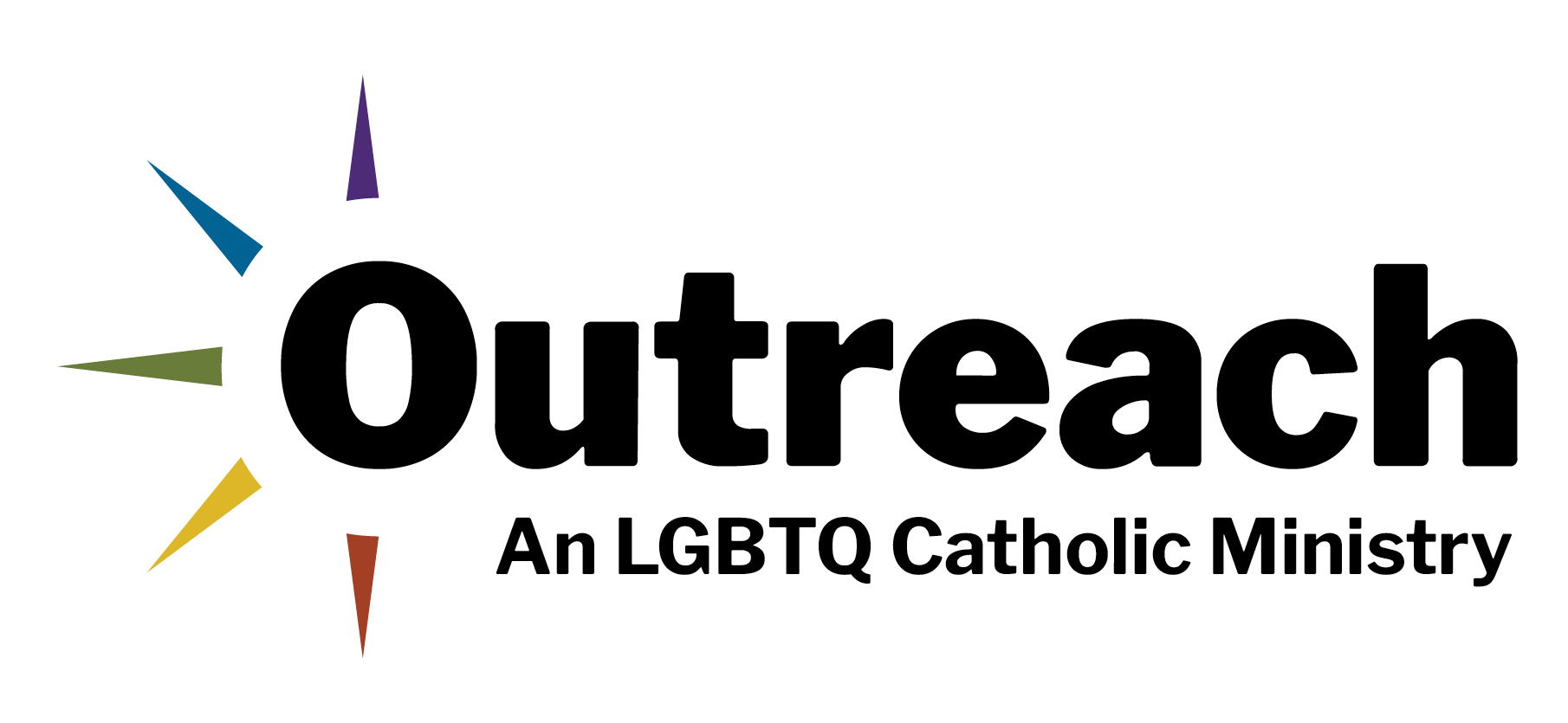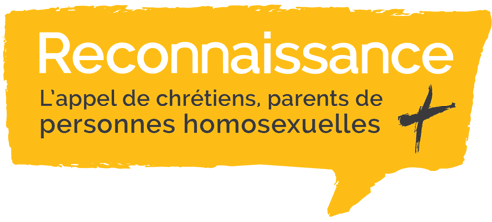United in dialogue with each other
There are, at least, 20 United States dioceses that have approved instructions or policies on sexual orientation and gender identity. While these policies are issued broadly to cover all diocesan ministries, there is one sector affected most seriously: Catholic schools.
The trend, based on anecdotal evidence, is that many of these documents are commissioned, written and approved without the involvement of families or catechetical/school offices. That means these policies are released as a surprise to those most affected: administrators, teachers, parents and students.
The goal of this article is not to deconstruct or challenge Catholic theology, but to focus on Catholic high schools and demonstrate the struggle in our church to find the narrow ridge between apologetics and pastoral ministry. People who work with young people know that trust is a doorway to the heart and mind and trust must be earned through the primacy of relationships. Christ prioritized this disposition—mercy first.
Pope Francis further affirms this model in his allegory of the field hospital: “It is useless to ask a seriously injured person if he has high cholesterol. […] You have to heal his wounds. And you have to start from the ground up. This is the mission of the church.”
To lessen the surprise felt by first responders, the call must be for a new process of policy development, one that prioritizes dialogue with professionals who can offer counsel in the areas of doctrine, biology, spirituality, psychology, and youth ministry.
In 2019, the Journal of Catholic Education published a special issue with an introduction that supports this claim: “Dialogue can generate more informed research, inform practice, and improve conditions for all involved.” Furthermore, if parents are the principal and first educators of their children (CCC 1653), then our dioceses have a responsibility to support families in the pastoral care of children who identify as sexual or gender minorities.
Rather than implementing broad, sweeping policies, careful attention should be given to particular experiences in homes and schools. This is an application of the principle of “subsidiarity”—that higher order institutions should respect the autonomy of lower ones (CCC 1894). Those who are most closely associated with the circumstances must be allowed the freedom to respond to children with grace and mercy, which bears witness to the first and last point of Christian reference: Jesus Christ (CCC 1698).
Even as they defend doctrine, diocesan statements are deepening the crisis by making it more difficult to hold up the tensions for further conversation. The January 2022 instruction from the Congregation for Catholic Education acknowledges that Catholic schools are “responsible for ensuring respect for the life, dignity, and freedom of pupils and other members of the school.” If we move ahead with haste on reactionary statements, then the cost appears high: heavy burdens on those who work with youth, division among the faithful and loss of hope for reconciliation.

Matters imperfect and provisional
There is a cultural narrative that young people who identify as LGBTQ do it because of an earlier life trauma—absent father, broken family relationship, pornography addiction, sexual abuse. While data could be presented to support this correlation in specific cases, even our Catholic tradition affirms that causes on the whole remain “largely unexplained” (CCC 2357).
Yet some diocesan policies on sexuality and gender in the United States reinforce these assumptions, perpetuating stereotypes that close opportunities for necessary dialogue. Rather than creating schools of encounter, these policies are helping to create a culture of fear.
“The goal of this article is not to deconstruct or challenge Catholic theology, but to focus on Catholic high schools and demonstrate the struggle in our church to find the narrow ridge between apologetics and pastoral ministry.”
The dioceses of Springfield, Ill.; Fairbanks, Alaska; Lansing, Mich.; and Orange, Calif., share a statement that warns, “Violation of this policy by any employee may include immediate corrective action, suspension, and possible termination of employment.” Could this kind of policy be reconsidered with more pastoral care, so that Catholic school workers are able to minister among the complexities and nuances of teen life without the fear of losing everything?
Another perspective in some dioceses is that students who identify as LGBTQ+ cause confusion, disruption and distraction in their school communities. The policy in the Diocese of Corpus Christi, Texas is based on the 2019 policy from the Catholic Bishops of Minnesota. It reads: “Expressions of a student’s disordered inclination for same‐sex attraction are prohibited as they may cause disruption or confusion regarding the Church’s teaching on human sexuality.”
Similarly, in the shared policies of Little Rock, Ark., and San Antonio, Texas, the instruction is that “students may not advocate, celebrate, or express same-sex attraction in such a way as to cause confusion or distraction in the context of Catholic school classes, activities, or events.”
Can statements like this be rethought with a more pastoral heart? The church has fought vigorously for freedom of speech to challenge “woke” ideologies, so doesn’t it make sense to create campuses where realities and ideas can be brought into dialogue?
By saying a certain expression is prohibited reinforces the closeted experience of gay or transgender students, which further conceals LGBTQ+ persons from their school communities. If Catholic education, in part, hopes to prepare students for service to the world, then high school students should be allowed to encounter the complexity of the world, where they will be confronted with decisions to draw smaller circles of exclusion or wider circles of Christian fellowship.
The consequences for students violating policies are severe, as seen in the Little Rock and San Antonio dioceses.
If a student’s expression of gender, sexual identity, or sexuality should cause confusion or disruption at the school, or if it should mislead others, cause scandal, or have the potential for causing scandal, then the matter will first be discussed with the student and his/her parents. If the issue is not resolved to the satisfaction of the school, whose primary goal must always be to uphold Catholic truths and principles, then the student may be dismissed from the school, after the parents are first given the opportunity to withdraw the student from the school.
We encounter comparable thinking in the 2020 policy from the Archdiocese of Indianapolis: “Any student whose ‘gender’ has been legally changed from their biological sex, or who has chemically and/or surgically altered their given biology, may not be eligible for enrollment.”
While any disabling mutilation is illicit by Catholic moral standards (CCC 2296), the Diocese of Harrisburg, Pa., ruled in 2015 that even “notification of a student’s determination to undergo a sex change procedure . . . would violate [the policy]. The student would be ineligible to attend or remain in attendance in a Catholic school.”
Will this language be appreciated for its firmness or will communities recoil at the coldness? The Catholic Church in the United States supports Project Rachel, a ministry to serve those who have procured direct abortions—considered the most grave intrinsic evil—but a student who identifies as gay or transgender may not be welcome in our Catholic schools.
These schools accept and graduate kids of other faiths (or no faith at all) who don’t even believe in Jesus Christ or other tenets of our Creed, so how could we not not offer the same rights to all students who want a Catholic education? Even Jesus said, “Let the children come to me, and do not prevent them; for the kingdom of heaven belongs to such as these” (Mt 19:14).
In 2022, as we continue to live through an age of cultural unrest, we should at least slow down to consider the effects of hardened language. From the Diocese of Joliet, Ill.:
Particular attention must be given to guiding adolescents and young adults with same-sex attraction away from two specific dangers. First, help them see themselves as persons with a God-given dignity and not merely as individuals with sexual inclinations and desires. Second, help them avoid involvement in a “gay culture” opposed to the Church’s teaching, with its often aggressive and immoral lifestyle.
There is a bias here that “gay culture”—rather than all of American culture—is hyperaggressive and hypersexualized. The cost of these uncritical statements is a creation of discontinuity between what is intended (clarity on Catholic doctrine) and what is received (the impossibility of being accepted as fully human).
As another example, in the 2021 policy from the Diocese of Marquette, Mich., we find a common-but-imperfect comparison:
A good analogy is how we would help persons who are suffering from anorexia nervosa. In this disorder there is an incongruence between how the persons perceive themselves and their bodily reality. They may perceive themselves as overweight when they are quite thin. Just as we would refer a person with anorexia to an expert to help him or her, let us also refer persons with gender dysphoria to a qualified counselor to help them while we show them the depth of our love and friendship.
This analogy regarding anorexia nervosa appears to originate with the psychiatrist Paul McHugh in a 2014 op-ed published by the Wall Street Journal.
The comparison of gender dysphoria to anorexia is a common narrative circulating today in presentations by groups like the Person and Identity Project, but there are particular objections to this analogy.
“These schools accept and graduate kids of other faiths (or no faith at all) who don’t even believe in Jesus Christ or other tenets of our Creed, so how could we not not offer the same rights to all students who want a Catholic education?”
First, although a person with gender dysphoria may also have an eating disorder, the rates of eating disorders increase as countries become more western, industrial, and urban. This contrasts with what is presented, for example, in “Gender Dysphoria and Disorders of Sexual Development,” that “the existence of gender-nonconforming and transgender people has been documented throughout history and across cultures.”
Second, anorexia is a mental-health disorder reflected in a person’s self perception—“the belief by the dangerously thin that they are overweight.” Gender dysphoria is different. It is an existential reality not reflected in self-perception alone. It is revealed in how a person experiences the world, and how other people experience them.
Third, anorexia can be resolved with effective mental health treatment but there are no proven treatments currently for gender dysphoria. Finally, if anorexia is not treated, then the natural consequence is death. If gender dysphoria is not treated, then there is no equal physical outcome, except to say that this person faces an increased risk for suicide.
This is an issue that needs to be brought to the table of dialogue. Whether it is a false analogy, or just offensive and hurtful, the point is the comparison of gender dysphoria to anorexia needs to be put aside—especially in policies that have not been fully vetted by independent experts.
Since the only person who has access to an interior experience is the person in question, the Christian response should not be to adjudicate the truth through debate, but to listen with compassion and let the truth emerge in God’s “plan of loving kindness for the fullness of time” (CCC 2807). The only path forward demands this call for renewal.

The image of the invisible God
Amid the culture war raging over LGBTQ+ issues, to double down on particular elements of doctrine without an empathetic grasp of sensitive human realities foreshadows a modern-day Galileo affair. We do not yet fully understand the genesis of sexual orientation and the reasons for its variations.
Nevertheless, the current process of developing diocesan statements—which is a closed process—is moving ahead, resulting in policies that challenge the instruction from the Congregation for Catholic Education that Catholic schools are “school[s] for all, especially the weakest.”
So much of the resistance to this dialogue is rooted in the misperception that all personal questions of sex and gender are rooted in “ideology.” If ideology is an uncritical system of belief, characterized by claims that are not held up for further scrutiny, then gender ideology is a prime example. It is characterized by radical autonomy, claiming that gender is transient, fluid, and flexible—that people can choose their gender identity (a political identity) from a buffet of options.
This ideology can be rejected flatly on the basis of Catholic anthropology. Pope Francis even suggested that if gender ideology is defined this way, then it represents “the annihilation of man as the image of God.”
This ideology can be summarized neatly by stitching together statements from the dioceses of San Antonio, Lansing, Milwaukee and Arlington, Va.:
As Pope Francis notes, we must always respect the sacred dignity of each individual person, but that does not mean the Church must accept the confused notions of gender ideology. This ideology radically separates the material from the spiritual and treats the material as mere inert matter for the spiritual to act upon.
Consequently, human identity becomes a choice of the individual, one which can also change over time. Transgender ideology is being celebrated, promoted, and pushed out over all social media platforms and even children’s programming.
But here’s the problem: there is a substantial difference between gender ideology and gender dysphoria. The real issue is not about any purported gender ideology, but more precisely about an evident mental health concern. Institutional policies are not making this distinction.
Cases of gender dysphoria are not transient but deep-seated, not fluid but insistent and consistent across time, not radically autonomous but affirmed by counseling professionals as unchosen and unwanted in most clinical cases. This is a private matter of personal identity. In this circumstance, Pope Francis is wise: “For every case, welcome it, accompany it, look into it […] This is what Jesus would do today.”
Regrettably, this authentic human experience is being lumped in with gender ideology, at which point it is dismissed expeditiously. As one teacher put it to me: “It’s a fad! That’s what it is, a fad!”
In response to this cultural confusion, Catholic groups like the Person and Identity Project (PIP) are favored by dioceses because of their powerful stance against gender ideology. PIP has capitalized on this opportunity; however, as a Catholic organization, it should be noted that their website and presentations have very few references to the Gospel message of Jesus Christ.
They are a subsidiary of the Ethics and Public Policy Center (EPPC), an organization concerned foremost with defending American and Christian ideals. Furthermore, their use of scientific evidence draws frequently from a controversial 2016 report, written in part by McHugh and published in The New Atlantis.
This journal, which is not subject to peer review, describes itself as “not an academic journal but a public journal of ideas.” It was similarly a project of the EPPC, like PIP, before becoming independent in 2018. Notably, the EPPC and The New Atlantis still share the same office address and suite number in Washington, D.C.
Similarly, many dioceses endorse the American College of Pediatricians, including the Diocese of Fargo, N.D., which offers that ACP “has blazed the trail in responding to much of the erroneous medical messaging that is being promoted today.” Yet, in response, substantial claims of error are made about their own approach to science and medicine. For example, ACP suggests all care for gender dysphoria is the result of an “unscientific gender ideology,” which blurs the distinction made above between gender ideology and gender dysphoria.
Can the institutional Church counter the cultural prejudice and polarization by inviting more open and transparent dialogue? Are we willing to create a policy process that brings important constituents to the table before approving language that harms vulnerable children and families?
“So much of the resistance to this dialogue is rooted in the misperception that all personal questions of sex and gender are rooted in ‘ideology.'”
What would it take for our Catholic Church to design and offer more integrated programming, like the Christian-based Center for Faith, Sexuality, and Gender, or follow the lead of the Archdiocese of Baltimore, which endorses the Courage apostolate, but also the All Are Welcome Ministry, a group that has its own archbishop-appointed coordinator of LGBTQ outreach?
The present culture war rages so intensely that people are being forced to stand with or against our gay or transgender students, but this ministry is not a fool’s choice between orthodoxy and orthopraxis. (“Christianity is inseparably both,” wrote Pope St. John Paul II.)
As reported by the National Dialogue Final Report, the reality is “young people and ministry leaders, by and large, want to see a Church that is more accepting and authentic, and less judgmental and divisive,” especially on matters of gay friends and family members. If this ministry is to be done well along the narrow ridge, then it means having the patience to allow for a proper discernment of spirits. We cannot forget that on the receiving end of these statements is a human person, a child—full of grandeur and frailty. Imperfect, yet redeemed by Jesus Christ.
Words always fall short of the Mystery of God
The use of language is one of the prevailing obstacles in this conversation. Words have become signals of political leanings. Are you a Catholic or a “faithful Catholic”? Do you position yourself to speak about the “Truth in charity”? Or are you a person who practices “the art of accompaniment”? Do you use the language of “same-sex attracted” or the language of
“LGBTQ+”? In a theological sense, we could argue this mess is the work of the Devil, who has confused our language and divided us.

Concerning word choice, we find ourselves in a cultural debate over which labels to use for sexual orientation: homosexual, gay, same-sex attracted, LGBTQ, queer? Guidance from the Diocese of Marquette states, “It is best to avoid identifying persons merely using labels such as ‘gay’ or ‘transgender.’ It speaks more to our fundamental identity and dignity as persons to speak of persons with same‐sex attraction or persons with gender dysphoria.”
Similarly, the shared policies in Little Rock and San Antonio, TX recommend: “the use of the term ‘same-sex attraction’” when discussing LGBTQ experiences. Instruction from St. Louis, Mo., is that a person who uses the LGBTQ lexicon is “labeling themselves in a way that’s inconsistent with the faith and inconsistent with their dignity as a child of God.”
The argument here is simple: we are all human beings created in the image of God, so we should avoid using labels other than “person” or “son/daughter of God.” The point is valid. However, it should be considered that same-sex attracted is itself a label, as evidenced by the prevalent use of SSA as an abbreviation.
The Diocese of Kalamazoo, Mich., has a web page titled “Church Teaching on SSA”; the Diocese of Lincoln, Neb., has a 2015 story about “educating clergy in how to minister to people with SSA” and the Archdiocese of St. Louis, under “Those Who Struggle with Same-Sex Attraction,” has a 2016 pastoral guide with the file name “SSA Booklet.”
“Can the institutional Church counter the cultural prejudice and polarization by inviting more open and transparent dialogue?”
First, there are not people with SSA, like it is some pathology to be treated like ADHD, MRSA, or COPD. These people don’t have anything other than human dignity. They just happen to experience attraction to people of the same sex. Second, the phrase same-sex attraction has been widely used in ex-gay narratives and reparative therapy circles, approaches that are fraught with bitter controversy.
Of course, in this debate, there are people who find the letters of LGBTQ troubling. Either way, a call to more open and friendly dialogue requires an acknowledgement that people are far more than just their sexual orientations. According to the recent instruction from the Congregation for Catholic Education, respectful language should be used with “great attention and sensitivity to resolve any tensions and conflicts that may arise.”
There is a similar but more contentious debate taking place over gender identity and the use of preferred pronouns. Stitched together from the policies of Indianapolis, Arlington and Milwaukee:
School officials, teachers, and students are to interact with students according to their biological sex at birth. To do otherwise, would in fact be uncharitable, as it would be confirming such persons in their mistaken understanding of their identity. To use names and pronouns that contradict the person’s God-given identity is to speak falsely. T
To affirm someone in an identity at odds with biological sex or to affirm a person’s desired “transition” is to mislead that person. It involves speaking and interacting with that person in an untruthful manner. Permitting the designation of a preferred pronoun, while often intended as an act of charity, instead promotes an acceptance of the separability of biological sex and “gender” and thus opposes the truth of our sexual unity.
While gender dysphoria clearly presents a challenge, it is important to see that calling it a lie is misleading. A lie is intended to lead someone into error (CCC 2483), and our Catholic moral tradition is unequivocal that purpose and circumstances matter (CCC 1750-1760).
The motivations for using a different name or different pronouns can vary widely, so how can we declare truth or falsity when we still do not fully understand the complex realities? Discerning the proper way to speak about human persons requires time, careful discernment, and fraternal correction if necessary, not rash judgments and policies that cause unjust injury (CCC 2477-2478).
There is moral validity in giving adolescents room to question, explore and try to seek resolution to the profound sexuality and gender identity issues that have emerged in their lives. Our church is beleaguered by people who demand simple answers to these complex questions, but limiting the words a person can use, especially in self-description, is a violation of freedom. It controls a person’s story, or suggests that only certain stories can be told.
The Directory for Catechesis tells us that “dialogue is a free and gratuitous initiative, takes its cues from love, is not commensurate with the merits of the participants, is not binding, is for all without distinctions, and grows in a gradual way.” Once again, this kind of dialogue is the pathway forward, and it requires a process that employs professionals who have knowledge and skill in this arena.
If our Catholic faith has endured, then we have nothing to fear. We do not need to give up anything in the body of Catholic doctrine, we just need to embrace it along with the Gospel. That is the both/and reality of our Catholic faith.
The Kingdom of God lies ahead of us
In “Christus Vivit,” a 2019 apostolic exhortation addressed to young people, Pope Francis wrote, “Young people need to be approached with the grammar of love, not by being preached at. The language that young people understand is spoken by those who radiate life, by those who are there for them and with them.”
Only those who work with children and have earned their trust can truly understand what that means. Readers should consult the 2021 National Dialogue Final Report, which was a joint effort by several national groups involved in Catholic youth ministry. This will help elucidate why something like the introductory “State of the Issue” from the 2021 Archdiocese of Denver instruction resonates as out-of-touch to a younger generation.
That is why the process needs to involve those who speak “the grammar of love,” those who are recognized as champions on the frontlines of education, ministry, and pastoral care.
“Our church is beleaguered by people who demand simple answers to these complex questions, but limiting the words a person can use, especially in self-description, is a violation of freedom.”
It’s not all bad. These diocesan instructions and policies are seeking to establish what the Directory for Catechesis calls a “coherent doctrinal vision that can be used as a reference in life.” Behind the rhetoric is a worldview worth sharing—something true, good and beautiful.
It might start to take shape with a message like this, a composite narrative constructed verbatim from pieces stitched together from various diocesan statements:
Catholic schools are called to be places of evangelization, where students and families encounter Jesus Christ, and where each person is loved, dignified, and celebrated as a unique child of God. The role of the teacher is an increasingly complex one; Catholic educators need to be sufficiently prepared regarding the intricacies of the various questions that [sexuality and gender identity] bring up. To accompany others, it is insufficient merely to state the Church’s teaching: “all students are to live chastely.”
This policy is not intended to anticipate or address every situation. Rather, it provides the principles of Catholic teaching to encourage the faithful and to guide them in responding to an increasingly difficult cultural situation.
It is of paramount importance to handle such situations with gentle and compassionate pastoral skill and concern. Denigration or bullying of any person, including those struggling with gender dysphoria, is to be rejected as completely incompatible with the Gospel. Let us open our hearts to the love of God that we may overflow with love and kindness and respect for others.
The Church is obligated to equip the faithful with an understanding of God’s creation of the world, the nature of the human person, the importance of human sexuality, and the grace and virtue needed to be truly alive and happy on our way to eternal life.
A compassionate response to individual students need not dilute a robust presentation of Catholic teaching on human sexuality to all students. Rather, it can be viewed as an opportunity to clarify and deepen our understanding and teaching of the faith.
The starting point for Catholic education is a deeply held understanding that affirms the God-given irrevocable dignity of every human person. We are not defined or identified by our sexual attractions or conflicts about sexual identity. Our fundamental identity is as a beloved son or daughter of God. The human person, considered under this relational aspect, reveals an image of the central mystery of Christian faith and life—the Holy Trinity.
Catholic school leaders shall approach concerns about [sexuality and gender identity] with sensitivity, charity, patience, compassion, and love for each individual student. [These] issues are complex, delicate, and highly personal. It is of paramount importance to handle such situations with gentle and compassionate pastoral skill and concern.
Catholic educators should strive to reassure each student that he or she is a valued member of the school community. All forms of discrimination and hard treatment must be strongly resisted and corrected. School transfers should not be an administrator’s first response and should only be considered when necessary for the protection or personal welfare of the student.
The Church calls Catholics to accompany with [respect,] compassion [and sensitivity] those who struggle with trials related to sexuality [and gender identity]. Our school establishes an environment of encouragement, mercy, healing, and love to accompany its members as we journey on a path toward holiness.
It is the hope of our Church that ministers of the faith (“formators”) may walk in accompaniment with young people and their families. Pastoral accompaniment is the initial approach and subsequent establishment of an ongoing relationship of trust with another person.
Requests for accommodation will require consultation with and support from school administration. The [arch]diocese recommends taking a prudent and careful approach on a case-by-case basis. Pastoral care must meet a person wherever they are along the path. Pastors and administrators are strongly encouraged to solicit help when questions or situations arise.
This composite sketch represents the effort of just one person and countless hours of forensic reading. Imagine what we could do with a team of people who are competent in theological knowledge and pastoral skill. To get there we will need to slow down and embrace what is really meant by a synodal church—a church committed to walking together on the Road to Emmaus.
“Let us not grow tired of doing good, for in due time we shall reap our harvest, if we do not give up” (Gal 6:9). The cost otherwise is too great to bear.




